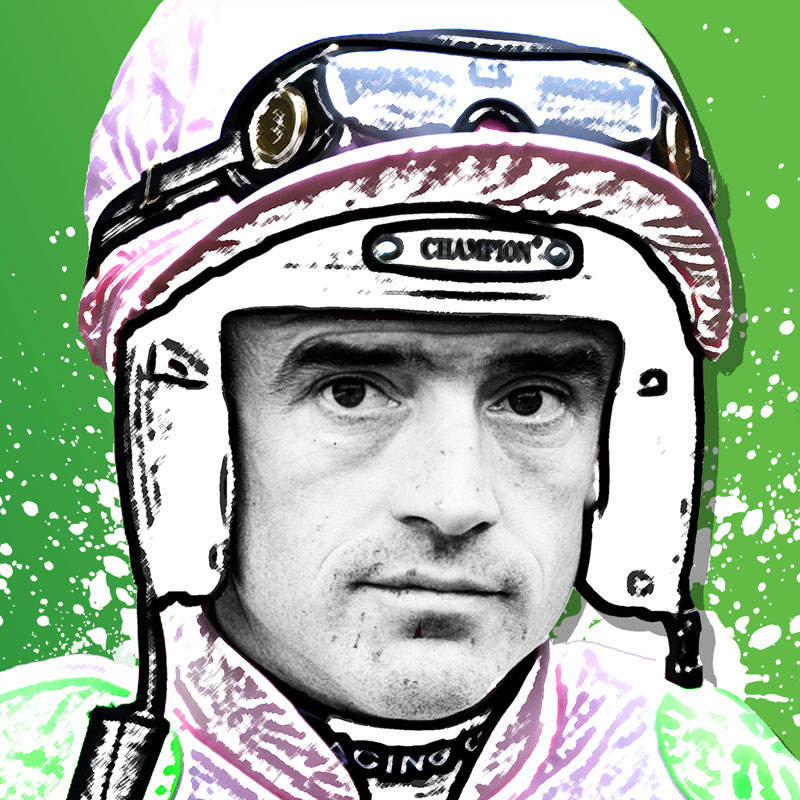
Ruby Walsh believes Asterion Forlonge must regain his confidence over smaller fences and could potentially be re-trained, having fallen on his previous two appearances this season.
The Willie Mullins-trained seven-year-old was set to give unbeaten Envoi Allen the biggest test of his career to date in the Sky Bet Killiney Novice Chase at Punchestown earlier this month but fell at the first obstacle.
That mishap was preceded by a fall at Limerick on Boxing Day and Asterion Forlonge’s current jumping struggles have cast doubt over his potential as a chaser, although he still holds three entries at the Cheltenham Festival in March.
Speaking on the latest episode of Paddy Power’s ‘Countdown to Cheltenham’ podcast, Ruby explained how the grey – who won two hurdles races last year but jumped markedly right in the Supreme Novices’ Hurdle at Cheltenham, badly hampering other runners on his way to a fourth-place finish – will go back to basics in order to tackle his problems.
- Check out all the latest Horse Racing tips and previews now
Asterion Forlonge will get lots of schooling over smaller fences to give him back the confidence. Three or four inches of height doesn’t make much of a difference, considering the size of a horse, but they need confidence.
Those inches do make a difference when you’re jumping a Puissance wall and you’re at the limit of what a horse can jump, or even in a showjumping Grand Prix when you’re putting the fence up to as high as the horse can possibly go, but most horses that can jump don’t find National Hunt fences too big for them.
It’s just about giving them confidence to go and jump them.
The easiest way for a horse to jump is when he meets a fence at speed on a nice stride, back from the obstacle. It’s much harder when they have to correct their stride or take a half-stride and then try to jump it.
It’s teaching them to jump when they meet a fence on a half-stride, or letting them figure it out for themselves, that is the trick to getting their jumping right.

DON’T MISS
- DON’T MISS OUR BRAND NEW SNAZZY RACECARDS FOR EVERY SINGLE RACE TODAY
- … THEN CHECK OUT ALL THE WINNERS BEFORE ANYONE ELSE WITH OUR FAST RESULTS PAGES
The ‘horse whisperer’ and jumping guru Yogi Briesner says that 10 per cent of horses are natural jumpers, 10 per cent will never learn to jump fences and the other 80 per cent can be taught to jump properly or on the flipside, taught to jump poorly.
Arkle winners tend to be in the 10 per cent that are just naturals over their fences – they almost hurdle the larger obstacles. They shouldn’t be arching their back or spending too much time in the air.
If you look at the first three in the market for the Arkle Challenge Trophy – Shishkin, Energumene and Allmankind – they all attack their fences.
Jumping fences is all about confidence and how much confidence you can instil in a horse. The height of the fence doesn’t really matter as you school horses over smaller fences at home so the extra three or four inches in height they face on a racecourse doesn’t really matter.
Cheltenham 2021
- Ruby Walsh and Frank Hickey reveal antepost picks for the Ballymore Novices’ Hurdle
- Ruby Walsh and Frank Hickey reveal antepost picks for the Supreme Novices’ Hurdle
- Ruby Walsh and Frank Hickey reveal antepost picks for the Albert Bartlett Novices’ Hurdle
- Ruby Walsh and Frank Hickey reveal antepost picks for Arkle Challenge Trophy
- Ruby Walsh and Frank Hickey reveal antepost picks for Marsh Novices’ Chase
- Ruby Walsh and Frank Hickey reveal antepost picks for Festival Novices’ Chase
Read More
- Paddy’s non-runner no bet on all Cheltenham Festival 2021 races
- Paul Jacobs’ 4 to thrive for Paddy’s Cheltenham 2021 offer
- Cheltenham tips: Timeform’s 3 to follow for the 2021 festival


